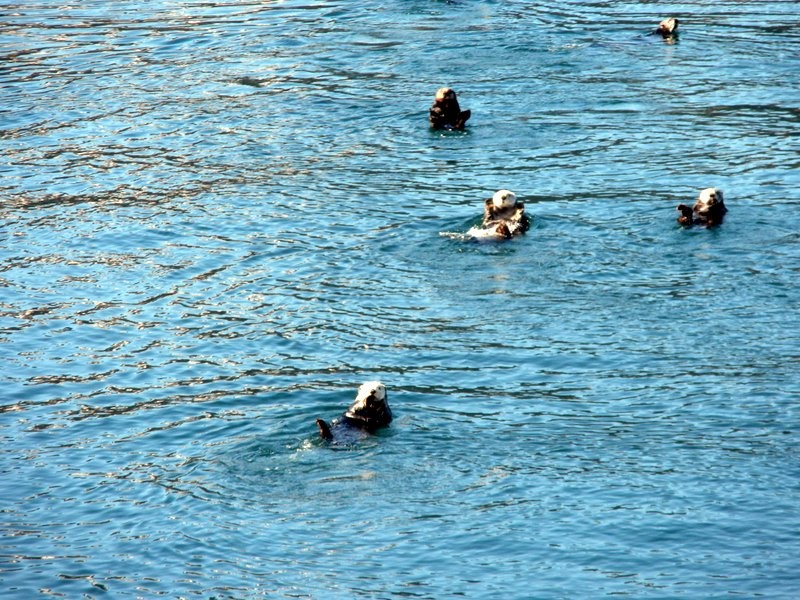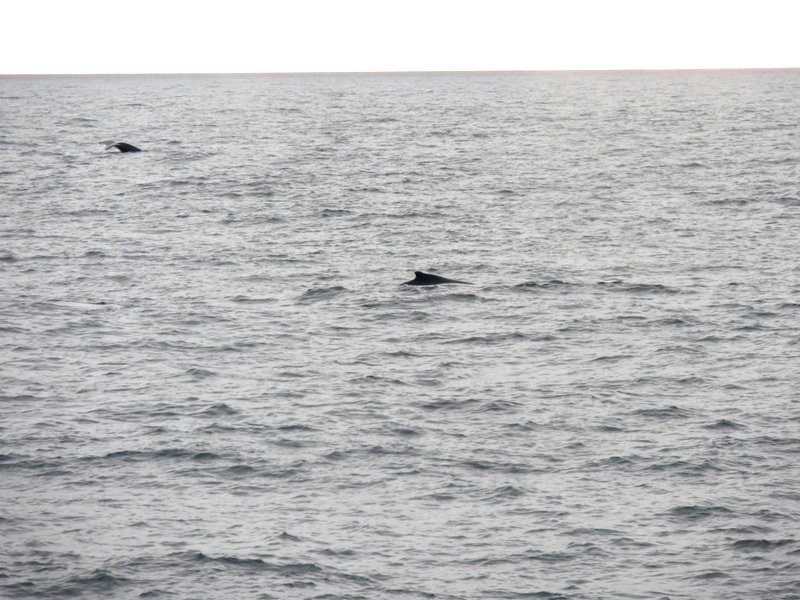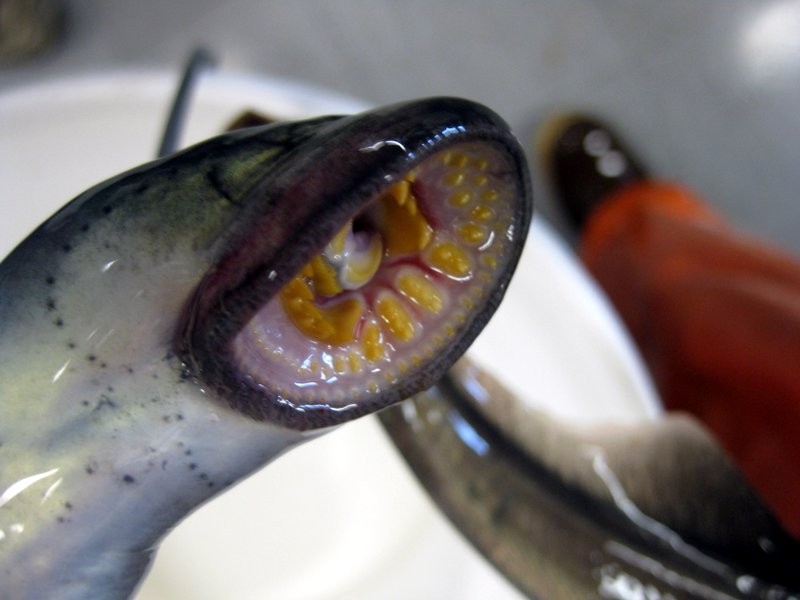Exploring the Bering Sea Ecosystem
Our stations have continued to be rich in phytoplankton, while our colleagues are excited by the larval fish they are finding in the southern Bering Sea. Wildlife sightings have included whales, dolphin, and the jawless lamprey fish, and we are settling in for potentially bumpy seas ahead.
Our stations over the last two days have continued to be rich in phytoplankton and some of the diatoms I described in the previous post. We have also observed a type of smaller phytoplankton at some of the stations, a prymnesiophyte called Phaeocystis.

This small phytoplankton is found throughout the world’s oceans, and since crossing into the Bering Sea we have seen it in increasingly larger numbers. Phaeocystis can actually exist as a rather large and elegant colony, with thousands of tiny cells embedded into a gel-like matrix, and this tiny phytoplankton plays a big role in the carbon and sulfur cycles. Phaeocystis produces a sulfur compound, 3-dimethylsulphoniopropionate (DMSP), which smells a bit like rotten eggs. DMSP becomes dimethyl sulfide (DMS) through various processes which provides a large chunk of sulfur to the atmosphere, playing important roles in cloud formation and climate regulation. During an Antarctic cruise to the Ross Sea in 2008 with my graduate adviser, Dave Caron, I had the opportunity to experience the unique joys of Phaeocystis first-hand! Since all of our freshwater on board the R/V Nathaniel B. Palmer was produced through desalination of seawater, the DMSP in a Phaeocystis bloom that we sampled for a couple of weeks made all of our freshly laundered clothes and newly washed bodies and hair smell distinctly unpleasant, thus wreaking havoc on shipboard life. Luckily, we have seen relatively few colonies of Phaeocystis here in the Bering Sea, and so Kali and I still smell and feel good about ourselves.
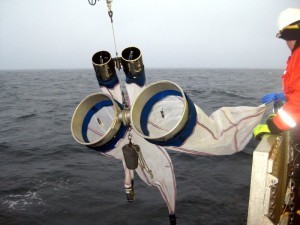
Otherwise, things are continuing more or less as planned aboard the R/V Oscar Dyson. We are sampling at two to three stations per day, and our colleagues are running net tows every three to four hours. Morgan Busby and Chrissy Jump from the Alaska Fisheries Science Center in Seattle, Washington are part of the science party studying fish larvae on this cruise. During the larval phase of their life cycle, many fish live like plankton, drifting wherever the currents take them.
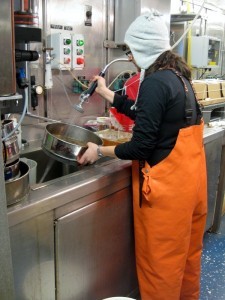
Morgan and Chrissy are using large “Bongo” nets made out of fine mesh (300 or 500 microns in pore size) to survey the larval fish at many sites in this southern part of the Bering Sea. They are interested in the distribution, abundance, and species of larval fish found in the Bering Sea during spring, and their team have been completing surveys in this area for nearly 10 years. Larval fish are vulnerable to changes in environmental conditions, and are often the first indication of how many adult fish are present and available for harvest years down the line. It is therefore important for us to better understand their ecology in order to quantify and predict the effects of climate change and to assess fish stocks in the Bering Sea. In addition to larval and juvenile fish, zooplankton, and even some large phytoplankton, the Bongo nets have brought aboard some interesting local characters, most recently a sea lamprey, a jawless fish-like creature that I fear will feature in some of my upcoming nightmares.

As part of life on a ship, we also practiced our Fire and Abandon Ship Drills after lunch today. For the Fire Drill we simply had to get together, what the crew call “muster,” in the conference room. The Abandon Ship Drill, on the other hand, required us to muster on the back deck with our life jackets, hats, and survival suits in hand and await further instructions.
We then continued back to the conference room where we had to practice putting on our survival suits. These are thick suits that, in theory, can keep you dry in the water if properly worn. Even if you throw it on in a pinch, your body heat will warm any water that gets in and keep you alive for a longer period of time than without one. I am a bit on the shorter side, so I had to exchange my suit for a small in order to even reach the hands and feet! But you can see Peter, one of our PMEL colleagues, modeling what will surely be a huge hit on the Paris runways in no time!
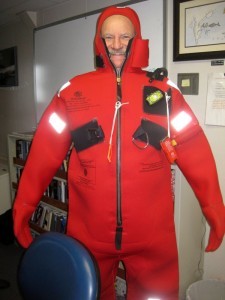
Our evening station is wrapping up, and we are double-checking our gear in anticipation of 30 to 35 knot winds forecast for tonight and the waves that may accompany them. So while we finish up work and try to get some sleep, here are some more wildlife photos, courtesy of our PMEL colleague, Scott McKeever. The otters are the same ones we spotted as we left Kodiak, and the humpback whales joined us as we made our way through the south end of Unimak Pass a few days ago. Today we were joined by what looked like a large pod of Pacific white-sided dolphin, but they were a bit camera-shy and remained too far off the bow for good photos. And the lamprey, well, that’s the creature that I imagine I will see in my sleep one of these nights.
